by Kate Nelson, PhD
Many parents and caregivers find themselves at home with young children while schools and child care centers are closed. Reading aloud is one of the most significant activities for developing literacy that also creates a sense of connection and safety in what may be a difficult time. Here are some research-backed tips to help make the most of these shared experiences.
What are interactive read alouds?
Research suggests the most effective read alouds happen when children ask and answer questions about the text, instead of just listening to the story—this is what’s called an Interactive Read Aloud (IRA). According to McGee and Schickedanzk (2007), the kind of talk that occurs is important too, and analytic talk is the most effective kind during an IRA. Two examples of analytic talk are predictions and inferences.
First, you should model how to make inferences and predictions, then follow up with thoughtful questions. For instance, you might pause the story to model an inference by saying, “I think this character is angry. I can tell by her frown, and how she’s clenching her fists.” This can be followed by a question that asks for and models a prediction. “What do you think she’s going to do? I think she’s going to yell at her brother because she’s so mad at him.”
Predictions: Making a guess about what will happen
Inferences: Explaining a character’s feelings or motivations using evidence from the pictures or text
How to do an interactive read aloud:
Another way to increase the value of an IRA is with repeated readings. McGee and Schickedanz (2007) recommend reading a book three times. There are four parts they suggest thinking about when rereading.

Book introduction: In a first read, introduce the main problem and characters. In a second read, prompt for some retelling by asking what the child remembers. In the last read, allow your child to retell even more of the story.

Vocabulary: Choose a few words and insert short definitions or gestures that demonstrate the meaning. These don’t need to interrupt the story. For example, “She looked at him sternly. That means seriously, like he was in trouble.” Read on.

Analytical Questions and Comments: Model and prompt for predictions and inferences. For instance, ask for a prediction by saying, “What do you think will happen next?” Or, model what you infer a character is feeling, and then prompt for your child to do the same. For example, “I think he’s feeling sad because he’s so quiet, and he looks sad in the picture.” On the next page, point to a character and ask what your child thinks the character is feeling.

Final why question at end of book: Ask a “why” question at the end of the story. For example, “Why do you think [character] was doing ____?” Or, “Why do you think being kind is important?”
Don’t feel overwhelmed! Pick one of the above elements of an interactive read aloud, and try it a few times with each reading. As you become comfortable, you can experiment with the different parts. But remember, good readers read a book multiple times! You can always circle back and try out another part if you’d like.
Use rich texts
Researchers also highlight the importance of using rich texts (McGee & Schickedanz, 2007). They note that while predictable texts like Brown Bear, Brown Bear What do You See? (Martin, 1967) are a key part of children’s literacy, they don’t offer chances for analytical talk. The authors suggest using rich texts with advanced vocabulary and chances for analytical talk, like Oonga Boonga (Wishinsky, 2001), Owl Moon (Yolen, 1987), and Henny Penny (Galdone, 1968). Other rich texts I like are Each Kindness (Woodson, 2012), Maddi’s Fridge (Brandt, 2014), The Paper Bag Princess (Munsch, 1980), and Shin-chi’s Canoe (Campbell, 2008).

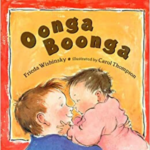
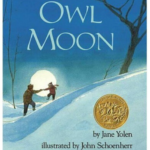

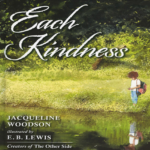
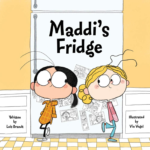
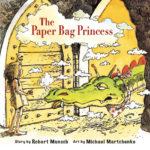
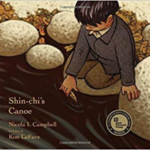
Use pictures to prompt for questions
Another way to boost an IRA is to use the pictures to ask thoughtful questions. Research shows that readers who use self-questioning while reading increase their understanding. Lohfink (2012) believes that readers should be taught to ask themselves thoughtful questions by using interesting pictures.
Instead of looking at the cover and saying the title and author, she suggests asking a question like, “What questions do you have when you look at this cover? What do you notice?”
She also suggests using puzzling pictures to prompt for questions. Puzzling pictures are unexpected, or make the reader stop to try to understand what’s happening. They may cause a moment of confusion when first looking at them. The author encourages adults to use these pictures to model self-questioning. Ask, “What questions come to mind because of this picture?” or “What new information do we need to find out, after looking at this picture?”
Other ways to boost the value of interactive read alouds
Other activities that strengthen the value of IRAs include:
- Retelling the story (child can do with you or on their own; you may need to model)
- Making the text into a drama
- Reading several books on the same topic
- Inviting children to play with objects related to the story
- Inserting short definitions (or gestures) to define words in the book and encouraging children to use these words while talking about the book
- Using post-it notes for self-questioning with puzzling pictures. You can read aloud and your child can use post-its to mark pages where they have questions. You and your child can stop and discuss questions during or after reading.
- Practicing self-questioning with sibling in “buddy reading”—an older sibling may read to a younger sibling, or both may read. May use post-its to mark where they want to stop and talk about a picture together.
These activities can be simple, but powerful. It’s important to make sure these activities are enjoyable so the IRA is a fun experience.
Keep it simple and have fun
There are many ways to approach IRAs, and it can be overwhelming. Pick one strategy that seems within reach and try it out. Most importantly, read alouds should be a positive experience for you and your child.


